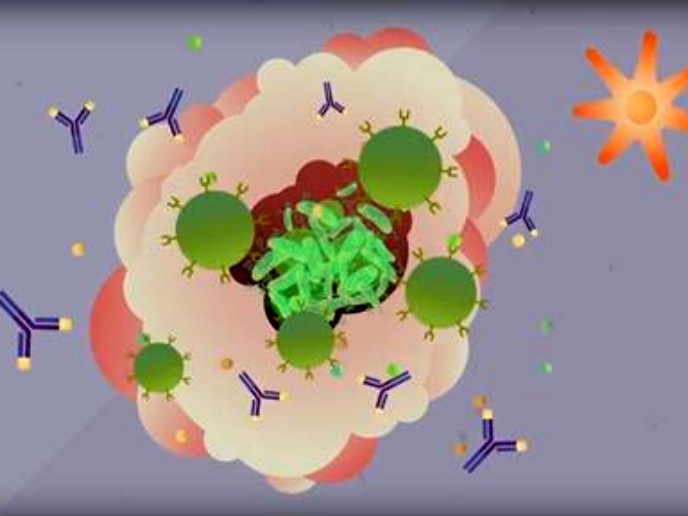Bacteria recruited for cancer therapy
Cancer constitutes one of the leading causes of mortality worldwide, necessitating the development of novel treatment strategies. Immunotherapy has emerged as a powerful approach for stimulating the immune system to fight cancer and maintain long-lasting immunity. However, very few agents manage to target and penetrate the solid tumour, often causing immune-related toxic side effects. In addition, some tumours develop mechanisms of immune evasion and suppression, such as tumour hypoxia, further limiting the uptake of drugs. Engineered bacteria to deliver drugs to tumours The EU-funded CMI2T IA project proposed to deliver immunotherapeutic drugs through non-pathogenic anaerobic bacteria. The rationale was that tumours are deprived of normal oxygen levels leading to hypoxia or necrosis, which constitutes an ideal environment for Clostridium bacteria. As project coordinator Prof. Philippe Lambin explains, “these hypoxic cancer regions are resistant to conventional treatment but can be selectively colonised by Clostridium bacteria.″ These bacteria can be engineered to express immunotherapeutic agents. In case of any unexpected safety issues the patient can be treated with antibiotics. Upon administration, these engineered bacteria infiltrate the hypoxic and necrotic tumour region and act as cellular factories, continuously producing immunotherapeutic cytokines or small antibodies, for example. CMI2T IA researchers have designed a tumour-targeting strategy that employs a ‘release the brake’ antibody to the programmed death-1 (PD-1) and Interleukin-2 a ‘push the accelerator’ cytokine. This dual approach essentially triggers antigen-specific T-cells to target cancer cells with promising results in animal models of cancer, reducing tumour growth and improving recipient survival. Delivery of these agents through Clostridium vehicles is expected to improve intra-tumoural delivery. Preliminary results demonstrate that Clostridium sporogenes can effectively colonise solid tumours, such as non-small cell lung cancer, in experimental animal models and deliver drugs or antibodies locally at the tumour site. “The Clostridium-delivery system can delivery large quantities of immunotherapeutic agents at the tumour site with great specificity,″ continues Prof. Lambin. Advantages of the CMI2T IA system Overall, the CMI2T IA double approach is expected to achieve superior efficacy to current immunotherapy strategies with a larger number of responders as it targets the hypoxic and necrotic nature of cancer. Compared to existing treatment approaches, the Clostridium-mediated drug delivery approach minimises adverse side effects by concentrating the therapy within the tumour. It also avoids lengthy treatment courses by allowing one-time administration, and offers minimal toxicity by eliminating bacteria with antibiotics once the curative effect is achieved. Lung cancer has a poor prognosis and chemotherapy yields a response rate of only 15-30 %. Clinical evidence so far demonstrates a limited efficacy of existing immunotherapeutic drugs, emphasising the challenge pharmaceutical companies face when it comes to cancer therapy. In view of the future, Prof. Lambin believes that “although Clostridium-drug delivery was designed with a focus on lung cancer, it can be used against other usually large, solid tumours in which necrosis has been shown to be a negative prognostic factor, such as glioma, cervical cancer, liver cancer and colorectal cancer.″
Keywords
CMI2T IA, cancer, tumour, immunotherapy, Clostridium, cytokine, hypoxia, antibody, programmed death-1 (PD-1) pathway

